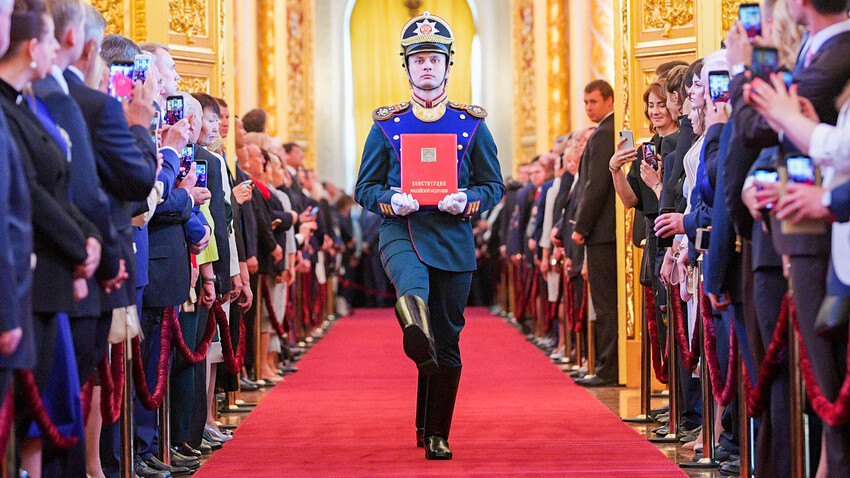
Various initiative groups, as well as collectives created by the decision of authority bodies, were engaged in developing this document in Russia beginning from 1990.
The text of the 1993 Constitution was drafted by the Constitutional Conference, formed by the decree of President Boris Yeltsin in May 1993. It consisted of approximately 800 people – the representatives of:
The conference worked on creating a document on the basis of two projects. The first was prepared by the Constitutional Commission that worked in 1990-1993. Some of its members transitioned to become a part of the participants of the Constitutional Conference. The second was presented by the president.
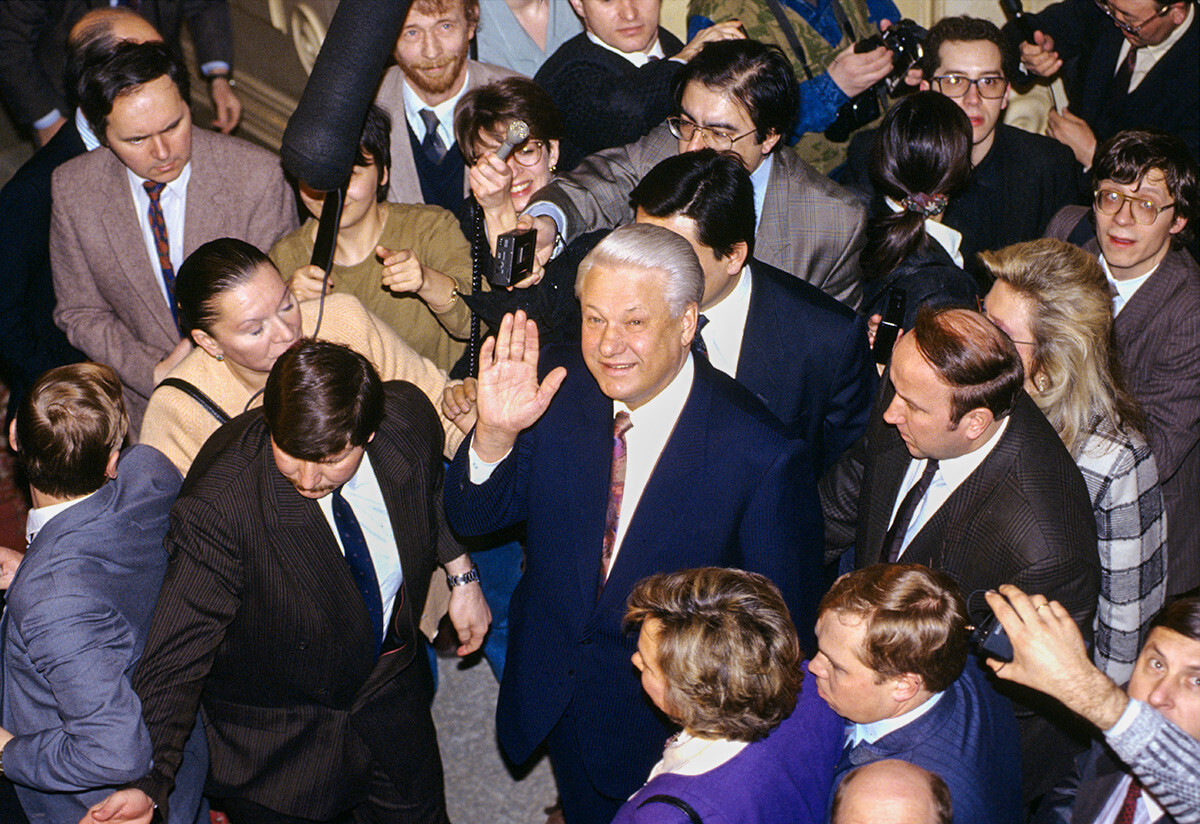
President of the Russian Federation Boris Yeltsin
Alexander Makarov/SputnikSergei Shakhrai, a government figure and politician from Boris Yeltsin’s team, noted that, in essence, the “presidential” project was prepared by him and legal scholar Sergei Alekseev.
Overall, 58.2 million people (54.8% of people registered on the voting list) participated in the vote. Of them, 32.9 million (58.4%) people voted for adopting the Constitution. In total, the country’s population was 148.6 million people in 1993.
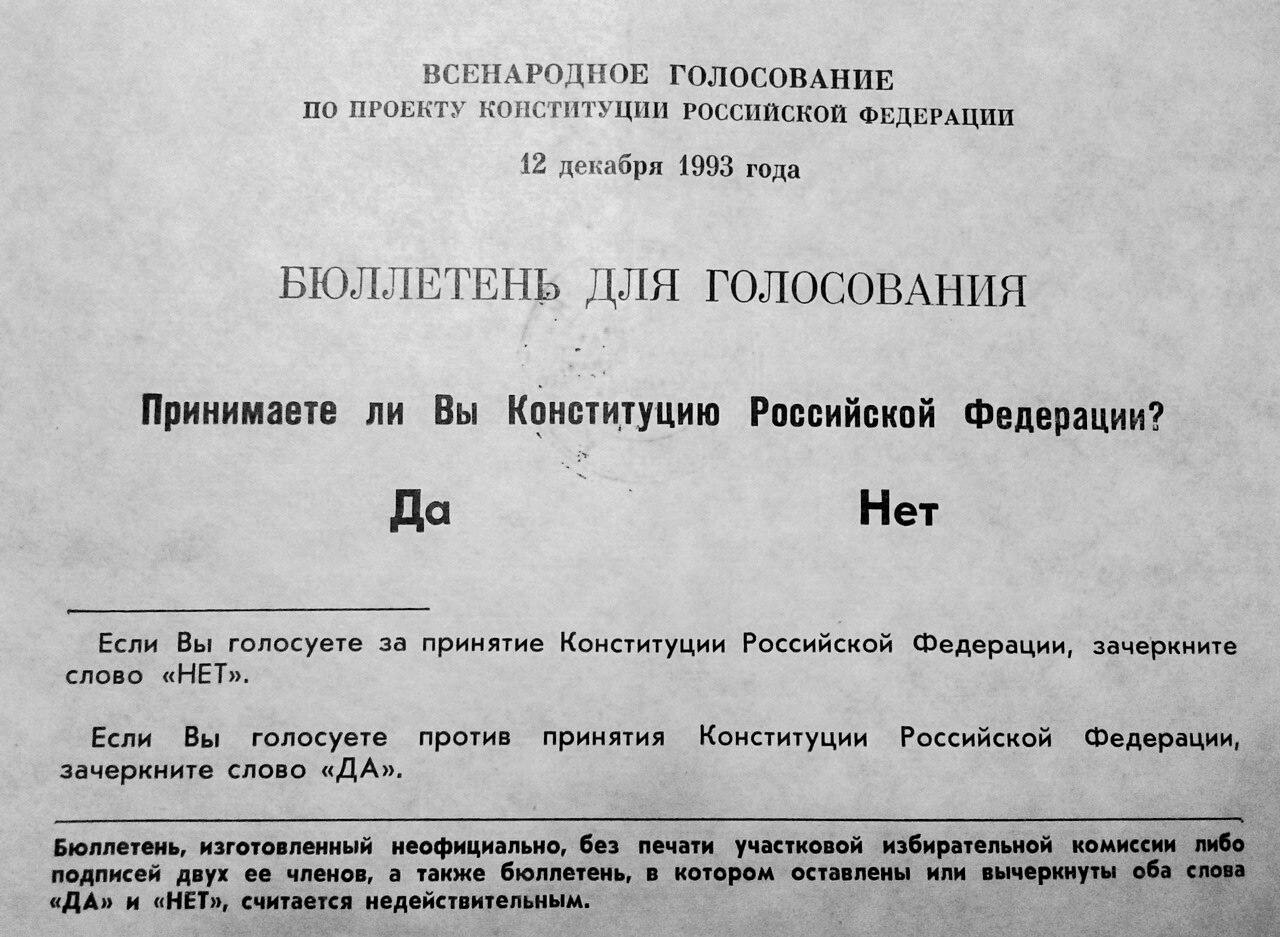
Ballot for voting on the Constitution of the Russian Federation
Public domainThe ballot had only one question: “Do you accept the draft Constitution of the Russian Federation?” and two answers: ‘Yes’ or ‘No’. Citizens had to cross out the answer they didn’t agree with.
By the presidential decree of Boris Yeltsin, the Constitution of the Russian Federation was considered adopted if it had been supported by more than 50% of the voters that participated in the vote. The nationwide vote would be considered void if the voter turnout from the registered voters was less than 50%.
The necessary amount of votes in support of the new basic law of the country was collected and the Constitution officially came into force on December 25, 1993.
Yeltsin signed the Project of the Constitution on November 8, 1993, at 3:15 pm and passed it to the Central Election Commission.
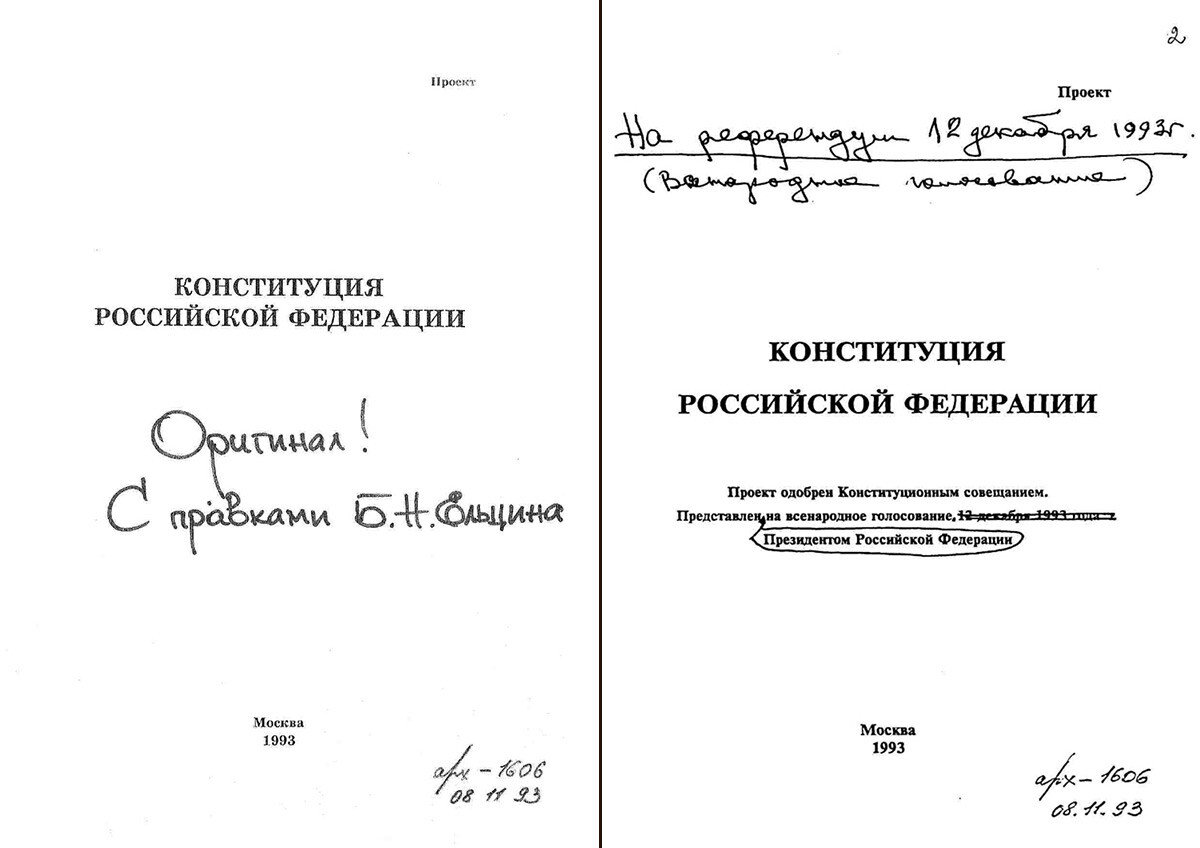
Draft of the Constitution of the Russian Federation
Archive of the President of the Russian FederationOn November 10, 1993, its text was published in ‘Rossiyskaya Gazeta’ (‘Russian Newspaper’) – the official publishing body of the Russian government. The people had a month to get acquainted with it.
Before December 25, 1993, the Constitution of the Russian Soviet Federative Socialist Republic was in place, adopted on April 12, 1978. Since the announcement of the state sovereignty of Russia on June 12, 1990, it was actively being amended. From November 1991 to December 1992, more than four hundred amendments had been made.
In 1990-1993 – according to the Constitution in place at that time – the Congress of People's Deputies was the highest state authority in Russia. The Supreme Soviet of Russia, composed of two chambers, the Council of the Republic and the Council of Nationalities, was its legislative, administrative and supervisory body. President Boris Yeltsin strove to conduct his own independent policy. But, for that, he needed to secure the president’s powers in the basic law of the country.
In Fall 1993, the struggle, known as the constitutional crisis, reached its culmination.
On September 21, 1993, Yeltsin signed the decree No. 1400 ‘On the phased constitutional reform in the Russian Federation’. This decree stripped the Congress of People’s Deputies and the Supreme Soviet of Russia of their legislative, administrative and control functions; it also terminated the authority of people’s deputies. In October 1993, the former bodies of legislative power were dispersed with weapons and armored vehicles.
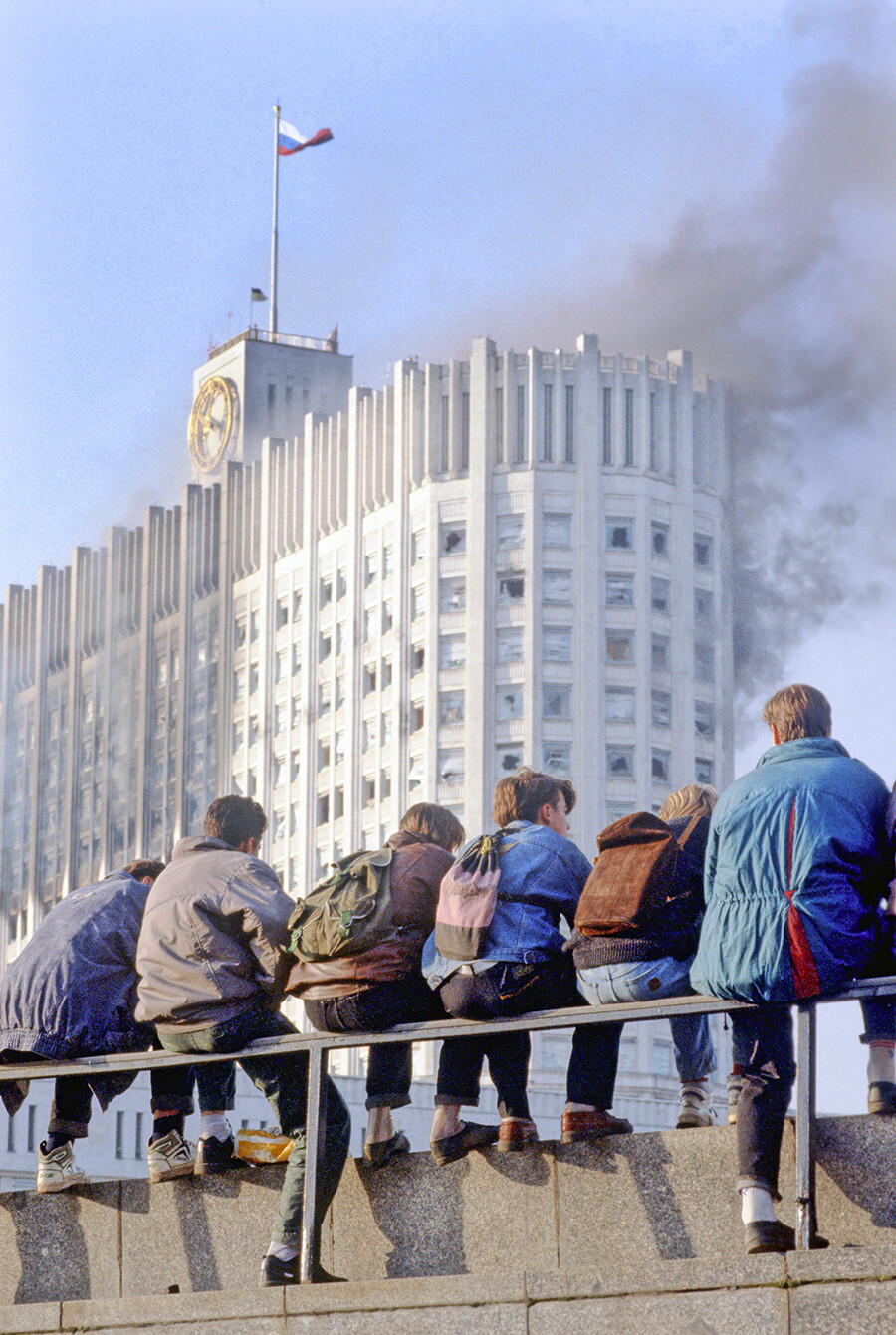
The Russian parliament burns after government troops storm it. The constitutional crisis of 1993.
Vladimir Vyatkin/SputnikThe State Duma and the Federation Council then became the legislature of Russia. The deputy elections for both chambers of the Federal Assembly were held on December 11-12, 1993, at the same time as the day of the nationwide constitutional vote.
On September 19, 1994, Constitution Day (December 12) was declared a state holiday.
For 12 years, December 12 was a public holiday. In 2005, however, it became a regular work day again, but it was declared a ‘Memorable Date’.

The first Soviet Constitution was adopted by the Fifth All–Russian Congress of Soviets on July 10, 1918.
On December 30, 1922, the representatives of the Russian Soviet Federative Socialist Republic, Ukrainian and Byelorussian Soviet Socialist Republics, as well as the Transcaucasian Socialist Federative Soviet Republic signed the Declaration and Treaty on the Formation of the Union of Soviet Socialist Republics. The constitution of the new state was ratified on January 31, 1924.
Later, Russia had two “levels” of constitutions: the Constitution of the Soviet Union and the Constitution of the Russian Soviet Federative Socialist Republic (RSFSR) as part of the USSR.
The USSR had three constitutions overall: in 1936, the second one was adopted, dubbed the ‘Stalin Constitution’; and, in 1977, the third was adopted, known as the ‘Brezhnev Constitution’.
The RSFSR, meanwhile, had four constitutions. They were adopted in 1918, 1925, 1937 and 1978.
Russian republics have their own constitutions. As such, apart from the Constitution of the Russian Federation that possesses the supreme legal power and supremacy on the territory of the country, Russia has more than twenty republican constitutions. But, all of them correspond to the federal one.
Other subjects of the Russian Federation – territories, regions, cities of federal importance, autonomous regions, autonomous areas – have charters.
Dear readers,
Our website and social media accounts are under threat of being restricted or banned, due to the current circumstances. So, to keep up with our latest content, simply do the following:
If using any of Russia Beyond's content, partly or in full, always provide an active hyperlink to the original material.
Subscribe
to our newsletter!
Get the week's best stories straight to your inbox